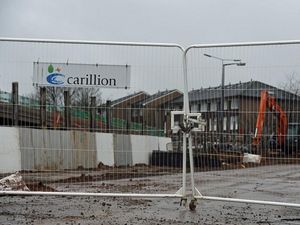Carillion: Why did it collapse and what happens next?
Carillion – which reported half-year losses of £1.15 billion – was struggling under nearly £900 million of debt.

What does Carillion do?
Carillion is one of the UK’s largest construction companies – employing around 43,000 staff globally including 20,000 in Britain – and is known for having worked on the Royal Opera House, the Channel Tunnel, Tate Modern, and the famous doughnut building of the UK’s Government Communications Headquarters (GCHQ) in Cheltenham.
But the Wolverhampton-based company also offers many outsourcing services for the public sector, with contracts to provide school dinners, maintain and operate buildings and estates, security and housekeeping, as well as cleaning and catering at NHS hospitals.
Why is Carillion in so much debt and how did it get this bad?
Carillion – which reported half-year losses of £1.15 billion – was struggling under nearly £900 million of debt and last year reported a £587 million pension deficit.
The company was forced to issued a string of profit warnings in 2017, after a review of its construction contracts found them to be much less valuable than previously thought, resulting in a £845 million write-off.
It prompted the resignation of chief executive Richard Howson, who said the group needed to bolster its balance sheet and was struggling to stay within its borrowing limits.
In December, the firm struck an agreement with its lenders to defer a crucial financial covenant test, but failed this past week to secure more money from banks and the Government that would help keep it afloat.
Neil Wilson, senior market analyst at ETX Capital, said: “This was a case of bad management and pitching for contracts at any price, but the Government and banks could, or maybe should, have done more”.
Why did the Government fail to provide funding?
Carillion is believed to have asked the Government to provide funds of £20 million to help it secure more money from the banks and avoid going into liquidation, but the Press Association understands that ministers were unwilling to offer financial support.
While the Cabinet Office has declined to comment, there are questions as to whether this was an issue of perception, as funding would look like the Government was bailing out yet another private firm.
It is a particularly sensitive topic in the wake of the financial crisis when the UK bailed out major lenders including Royal Bank of Scotland (RBS) and Lloyds.
The Government most recently came under fire after prematurely ending a contract with Stagecoach and Virgin, who had agreed to pay £3.3 billion to run the East Coast rail franchise until 2023, amid concerns that the two companies were considering pulling out due to financial losses on the deal.
What has the Government said?
Cabinet Office Minister David Lidington has said it is “regrettable” that Carillion failed to secure further funding from lenders but warned: “Taxpayers cannot be expected to bail out a private sector company.
“We remained hopeful that a solution could be found while putting robust contingency plans in place to prepare for every eventuality.
“It is of course disappointing that Carillion has become insolvent, but our primary responsibility has always been keep our essential public services running safely.”
Why were Carillion’s problems not caught earlier?





